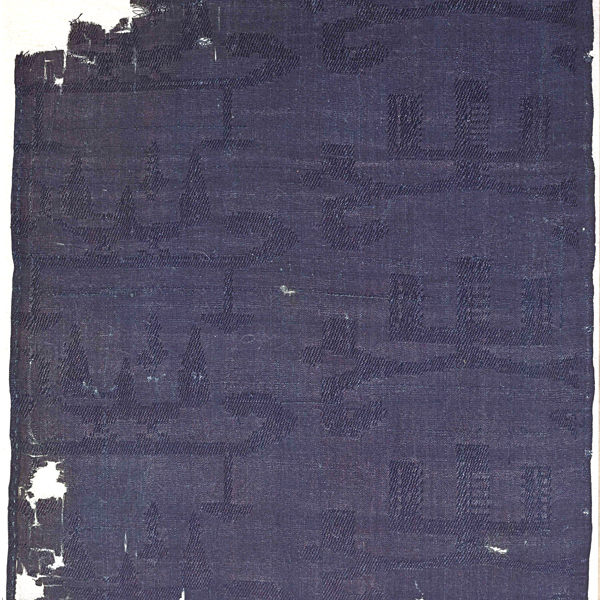书法、染织
-

绀地香炉烛台纹绫幡足残片(局部) 飞鸟-奈良时代 7-8世纪
法隆寺宝物馆 第6展室
2023年11月21日(星期二) ~ 2023年12月10日(星期日)法隆寺献纳宝物中的书法作品,包括孝谦天皇向法隆寺所献物品的目录——«法隆寺献物帐»、唐代传到日本的«细字法华经》、使用多罗树叶书写的“贝叶经”,及记载了圣德太子相关传记和法隆寺寺志的«古今目录抄»等。
染织品则以包含大量比正仓院宝物更早的飞鸟至奈良时代前期作品而著称,种类包括作为佛事庄严具的“幡”、作为僧衣的百衲衣和袈裟、作为铺垫物的褥等。尤其“幡”形式多样,不仅有大型的广东绫大幡、题有文字的幡,还有其他许多用途不明的残片。按织造技法分,有织锦、缂丝、将经线段染后再行织造的“广东裂”、绫、罗、平绢等;按印染技法分,则有被称为“三缬”的绞缬、蜡缬、夹缬等作品。除此此外,还有刺绣、编织带、毛毡等多种技法的染织品。
书法
| 指定 | 名称 | 数量 | 作者、出土、传入 | 时代、年代世纪 | 收藏者、捐赠者、展品编号 | 备注 | |
| 推荐 | 《古文书》 足利義政等笔 | 室町时代 1458年 | N-17-2 |
染织
| 指定 | 名称 | 数量 | 作者、出土、传入 | 时代、年代世纪 | 收藏者、捐赠者、展品编号 | 备注 | |
| 推荐 | 平绢幡残片 | 飞鸟-奈良时代 7-8世纪 | N-319-37 | ||||
| 推荐 | 绀地香炉烛台纹绫幡足残片 | 飞鸟-奈良时代 7-8世纪 | N-319-46 |
